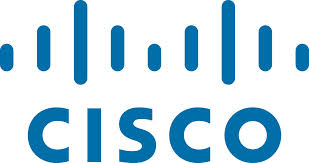Monday, March 16, 2015
Complexity versus Simplicity in Making Collaboration Work
This is the second post in my new Collaboration Insights series, with the focus being how IT needs to
balance the forces of simplicity and complexity in order to get things right
with collaboration. My
opening post set the stage by looking at the value of collaboration for
“getting work done”, which is what employees really care the most about. They
don’t care about the technology that drives UC, and that brings us to the
natural tension between these two forces.
The challenge of complexity
Collaboration solutions are complex for a variety of reasons,
and this creates challenges for both IT and end users. Whether called UC,
collaboration or UCC, these platforms can be complex to deploy, and this will
be a key consideration when choosing a collaboration vendor, especially those
that do not have all the applications native to their solution. Many vendors
only have some core pieces of their own, with other elements such as video or
conferencing being bolted on from other vendors.
Aside from the high possibility of having a collaboration
solution with a multi-vendor makeup, you have the additional challenge of
integrating this with your network environment. In principal, having all the applications
that drive collaboration under one roof is attractive, but these integration
issues are real, and is a key reason why some enterprises are hesitant about deploying
a collaboration solution. Vendors may promise a smooth deployment, but when
problems arise, it’s easy to understand why enthusiasm for these offerings
wanes.
There’s actually an even bigger challenge for enterprises
that eschew partnering with a collaboration vendor, and instead choose to drive
collaboration with their existing framework. Clearly, some enterprises do elect
to take their own path, seeing vendor-based offerings as a risk rather than an
opportunity – they’re too complex, no clear ROI, fuzzy business case, etc.
This actually creates greater
complexity, since core collaboration applications managed internally are
usually based in silos, spread across the organization. Whether it’s telephony,
conferencing, video or even fax, each application tends to be managed as a
point solution with dedicated resources, performance metrics and budgets.
We all know what’s possible with an integrated collaboration
solution, and those results are almost impossible to achieve with this model.
Without an overarching framework to integrate these standalone pieces, there is
a different kind of complexity that truly limits collaboration in today’s sense
of the word.
If that’s not enough, consider the challenges facing end
users. Despite all the technical expertise of most IT groups, they struggle
with the complexities of collaboration, both in deploying and managing the
tools. Of course, their job doesn’t end there, as IT’s success with
collaboration ultimately depends on end user adoption. No matter how many
problems IT had to solve to seamlessly integrate collaboration applications on
the network, their hard work will be for naught if the tools are too complex
for end users.
You won’t have adoption problems with super users, but by
design, collaboration is for everyone, and that’s how IT has to think in terms
of the end result. This doesn’t just extend to the applications themselves – it
includes the rules of engagement, usage policies, management controls, number
of steps needed to use applications, etc. In other words, effective
collaboration is about the total user experience being simple, and that’s not
easy to deliver across a large organization.
The imperative of simplicity
While the reality may be complexity, the expectation should
be simplicity. All of the above challenges are addressed when simplicity
becomes the reality. You may not think it’s possible, especially if your
organization is entrenched with silos that don’t talk to each other. Technology
has a lot to do with that, and your reality may well be one where IT simply has
higher priorities and resource constraints to effectively tackle the problems.
This is certainly a common theme in my research, and is a
key reason why enterprises have embraced the cloud. While this seems like a
panacea for everything, cloud-based collaboration solutions make a lot of
sense. First off, they take the complexity off your plate by managing all the
applications on a single platform. When considering purpose-built collaboration
platforms, this stops being an infrastructure issue with the cloud, and instead
becomes a service you consume, often referred to as UCaaS.
Think about what happens in that scenario. When you partner
with vendors that have a deep understanding of both collaboration and the
cloud, your IT challenges become simpler. In turn, you can focus downstream on
the real success driver – end user adoption. Ideally, collaboration tools
should be dead simple to use, but even if you need to school employees on just
a few basic steps, that’s a far more attractive scenario that dealing them a
complex hand from the start and expecting them to catch on.
Resolving the tension
So, how can IT find a middle ground to address the inherent
complexity around collaboration, along with delivering the simplicity required
to make it easy for employees, not to mention managing it internally? The long
answer requires more in-depth posts, and for now, my message is to start at the
beginning. This means recognizing the nature of this complexity and not being
resigned to accept it.
Of course, this also depends on your vision for
collaboration. If you’re only concerned with maintaining the status quo,
complexity won’t get in the way of doing what you’ve always done. However,
employees expect more now, and their jobs demand that they have better tools to
be productive. The same holds for your customers, so there’s a lot at stake
here. Hopefully, this is closer to your reality, and in that case, your vision
needs to be about transforming how we work instead of staying the course.
The only way you’re going to get there is by tackling
complexity head-on rather than letting it get in the way of collaboration. At
the heart of this, you need to find ways to break down silos and leverage the
cloud, and if those aren’t top-of-mind yet for your collaboration vision, I
hope they are now.
For clarity, please note that this Collaboration Insights series is
sponsored by Cisco Canada, but the content is my own, and by design is
vendor-neutral.
Subscribe to:
Post Comments (Atom)











No comments:
Post a Comment